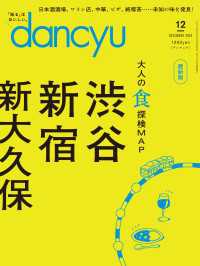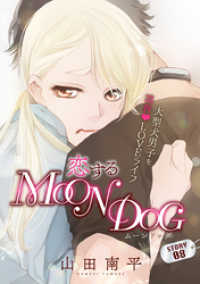- ホーム
- > 洋書
- > 英文書
- > History / World
Full Description
Examines the transformation of vernacular knowledge during a pivotal period of modern Chinese history, 1894 to 1954.
What did common readers read in the midst of the revolutions that punctuated China's long Republic (1894-1954)? How did they manage the often-unprecedented challenges of the era? What did they know and how did they know it?
In The Politics of Common Reading, Joan Judge traces the unfolding of a consequential politics of accommodation that engaged commoners as knowers rather than as an unenlightened mass. A response to the institutional failures of the era, this politics was enacted through an informal knowledge infrastructure comprised of low-budget publishers, rustic bookstalls, and a piecemeal national network. As yet unstudied, this infrastructure produced and circulated up to ten times the number of books as official, mainstream channels.
A corpus of some five hundred of these cheap collections of recipes and techniques serves as the basis for this book. Judge focuses on four challenges common readers faced: how to cure an opium addiction, avoid an electric shock, prevent a cholera infection, and graft a plant. She further draws on government, archival, periodical, and fiction materials in devising composites of individual common readers so that we can better know them: details of the crises they faced, the remedies they tried, and the knowledge they relied on as they concocted cures and applied technologies. She argues that the acts of conciliation and assemblage these readers engaged in shaped the broader epistemic terrain from which historical change was actualized in China's century of revolution.
Contents
List of Figures
Conventions
Introduction: The Mundane Revolution
Part 1: Common Reading
1. Common Readers
2. The Commoners' Corpus
3. The Commoners' Book Network
Part 2: Vernacular Knowledge
4. How to Cure an Opium Addiction
5. How to Avoid an Electric Shock
6. How to Treat a Cholera Infection
7. How to Graft a Plant
Conclusion: The Politics of Common Reading
Acknowledgments
Appendixes
Notes
Bibliography
Index
-

- 電子書籍
- dancyu 2024年12月号
-

- 電子書籍
- 愛の絵
-

- 電子書籍
- 悪役令嬢に選ばれたなら、優雅に演じてみ…
-

- 電子書籍
- 花ゆめAi 恋するMOON DOG s…
-
![月刊少年シリウス2017年7月号 [2017年5月26日発売]](../images/goods/ar2/web/eimgdata/EK-0436703.jpg)
- 電子書籍
- 月刊少年シリウス2017年7月号 [2…



